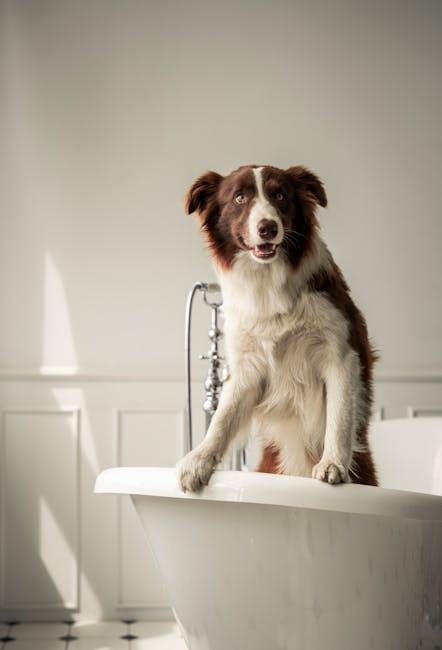
At DogDog, we’re fueled by an unwavering love for our furry companions and a mission to support those without homes. Grooming is more than just a pet care routine—it’s a bonding experience with significant implications for your dog’s health and happiness. Beyond the immediate clean and polished look, consistent grooming practices can prevent a host of health issues and keep your living space tidier and more pleasant. As you navigate the grooming journey, you’re indirectly benefiting shelter animals through our search engine, which transforms everyday online activities into substantial aid for dogs in need.
Why Grooming Matters
Grooming is crucial in maintaining your dog’s overall well-being. Regular pet grooming helps manage shedding, prevents mats that can cause pain, and allows you to monitor for new bumps or lumps that might require a vet’s attention. With the side benefit of bonding, grooming sessions can transform into quality time that strengthens the emotional connection with your dog.

Brushing: More Than Aesthetic Maintenance
Regular brushing is essential for distributing skin oils across the coat, which naturally adds a sheen and protects against dryness. Depending on your dog’s breed and coat type, brushing frequency can vary from twice a week to daily upkeep. Long-haired breeds require more attention to prevent mats, while short-haired dogs can get along with weekly brushings. Using the right tool—a slicker brush for removing mats and tangles or a pin/brittle brush for general maintenance—ensures an effective grooming session.
Brushing not only enhances the appearance and health of your dog’s coat but also drastically reduces shedding around the house, keeping your living environment cleaner. Moreover, it’s an excellent opportunity for you to check for unusual lumps, bumps, or parasites like ticks.
The Bathing Balancing Act
Bathing frequency should be customized based on your dog’s lifestyle and breed characteristics. Ideally, dogs should be bathed every four to eight weeks. Over-bathing can strip the essential natural oils, leading to skin irritation. Always use dog-specific shampoos to maintain skin health, and be cautious to avoid getting water in sensitive areas like the ears and eyes.

After a bath, ensure thorough drying. Damp fur can become a breeding ground for bacteria and allergens. This is especially true for breeds with dense coats. A gentle towel drying followed by brushing can ensure all natural oils are redistributed effectively, keeping the coat shiny and healthy.
Nail Care: Avoiding the Terrors of Overgrowth
Regular nail trimming is key to preventing discomfort and the potential for skeletal damage. Overgrown nails not only lead to pain but may force a dog into awkward positions, straining tendons over time. Monthly trims keep nails at an ideal length, allowing your dog to move comfortably.
To trim your dog’s nails properly, use dog-specific nail clippers or manual nail grinders. Learn to identify the quick—a vein that can bleed if cut. If you misjudge the length, apply styptic powder or cornstarch to stop any bleeding. Early and regular exposure to nail care can ease anxiety more common during these grooming sessions.
Keeping Ears Healthy
Ear maintenance is vital, especially for breeds with floppy ears prone to infections. Clean your dog’s ears weekly using pet-safe ear cleaning solutions and cotton balls. Avoid deep insertion to prevent injury. This routine keeps infection-causing bacteria at bay and alerts you to potential issues early on.
Check regularly for redness, bad odors, or any discharge, which are common indicators of ear infections. Immediate attention from your vet can prevent complications from untreated ear problems.
Oral Hygiene: More Than Just Fresh Breaths
Believe it or not, dental care is as necessary for dogs as it is for humans. The habit of brushing your dog’s teeth daily can mitigate tartar build-up and gum disease that could lead to more severe dental issues. Utilize dog-specific toothbrushes and toothpaste, as human products can be harmful to dogs.

Beyond mechanical brushing, dental chews and professional cleanings are useful complementary practices. Regular vet checks can catch issues before they develop further, maintaining oral health and fresh breath.
Practical Tips for Holistic Grooming
- Balanced Diet: This is foundational for skin and coat health as well as overall wellness. Consult your vet for the right diet and potential supplements for your dog.
- Paw Care: Trim hair between paw pads to prevent mats and ensure better traction. Regularly check for cuts, splinters, or irritated pads.
- Consistency: Establishing a predictable routine makes grooming a stress-free affair for all involved. It also helps in maintaining good hygiene consistently.
A Plug for a Pawsome Cause
Grooming is a rewarding experience that transcends physical care—it’s a channel for emotional bonding and ensuring happiness in your pet’s life. While you enhance your bond and your living environment with regular grooming, remember our mission at DogDog. By using our search engine, you’re not just enriching your searches but extending a helping paw to those waiting in shelters for a loving home. Every click counts toward feeding, vetting, and caring for shelter animals, so you’re making a tangible difference simply by searching.
Take a moment to consider how your search habits can transform lives. At DogDog, we’re here to guide you on this fulfilling journey. Dive into the world of impact with DogDog today!
